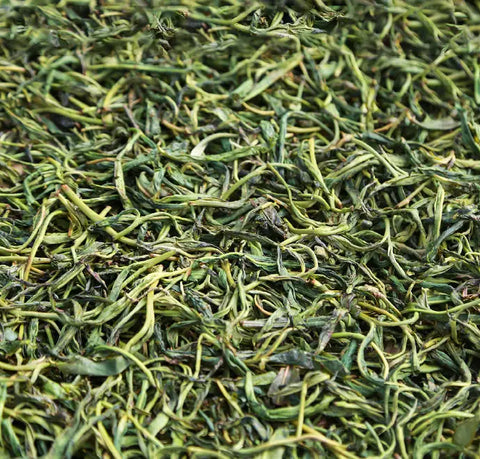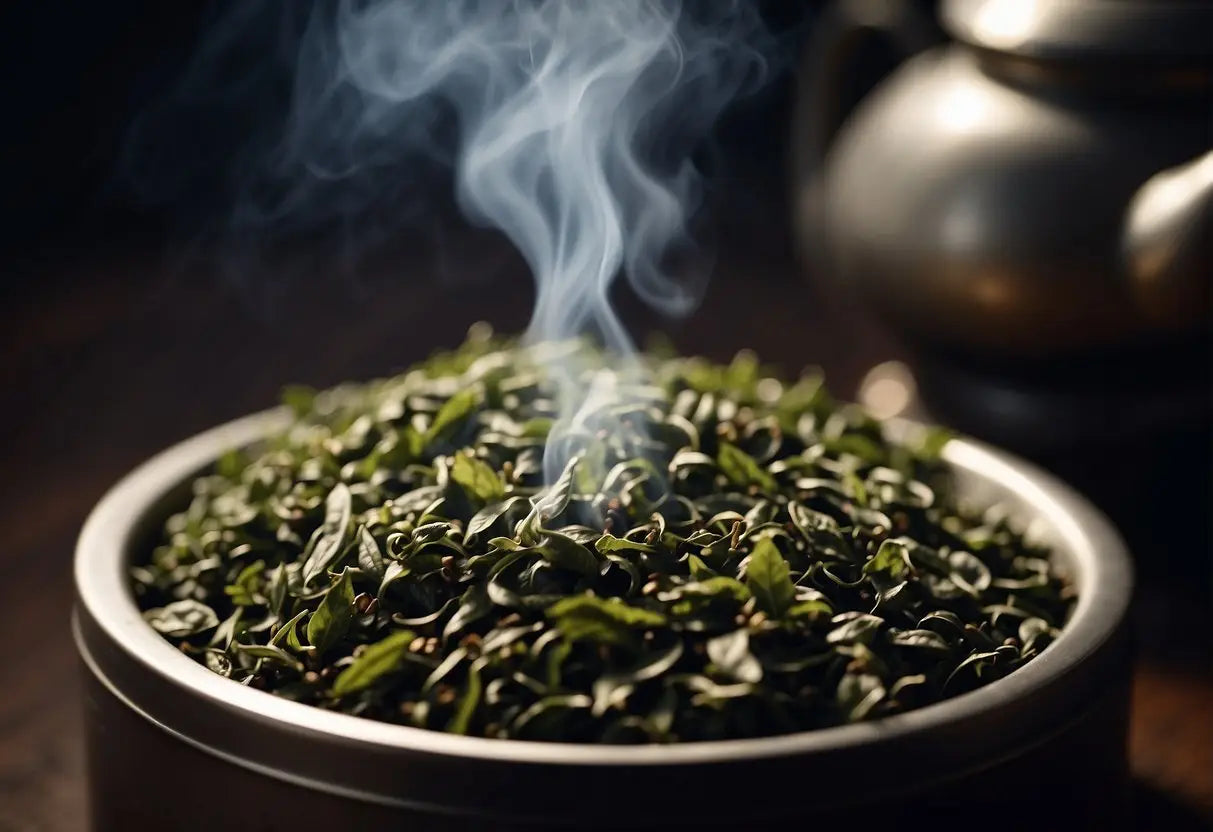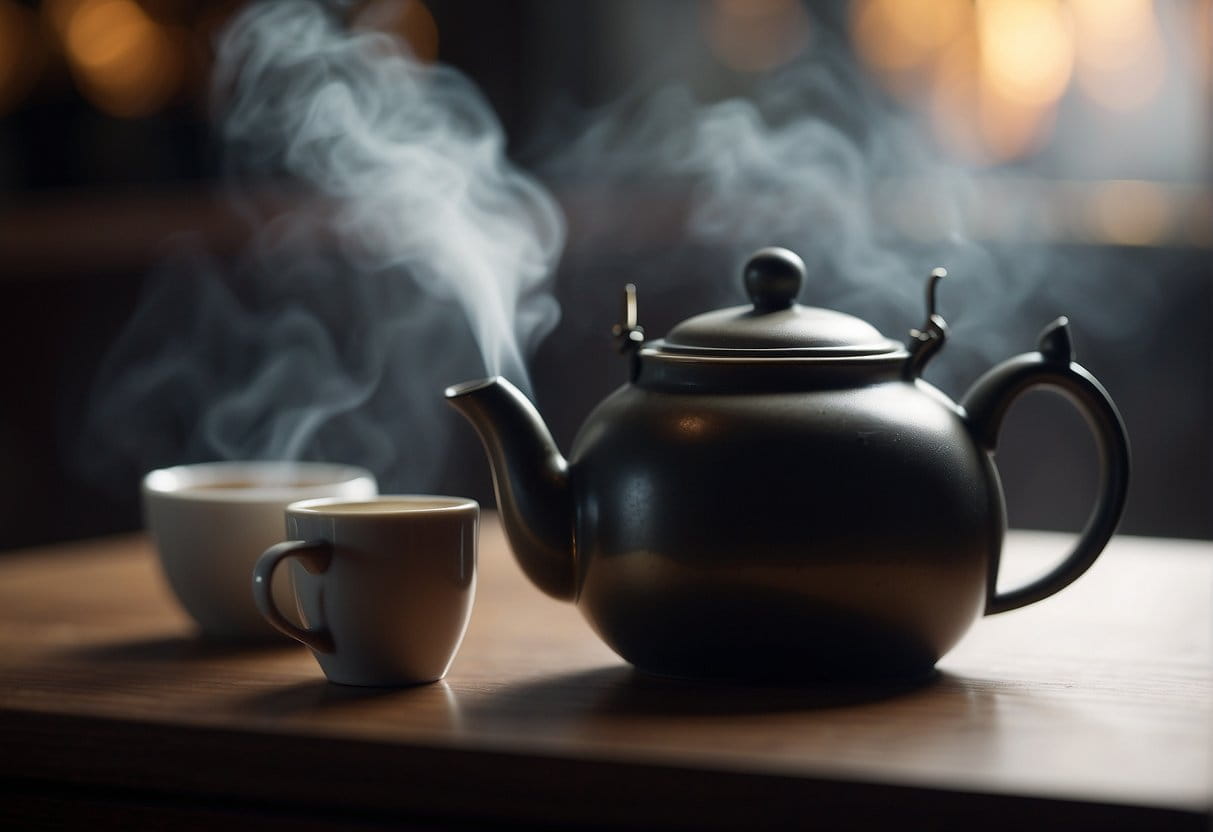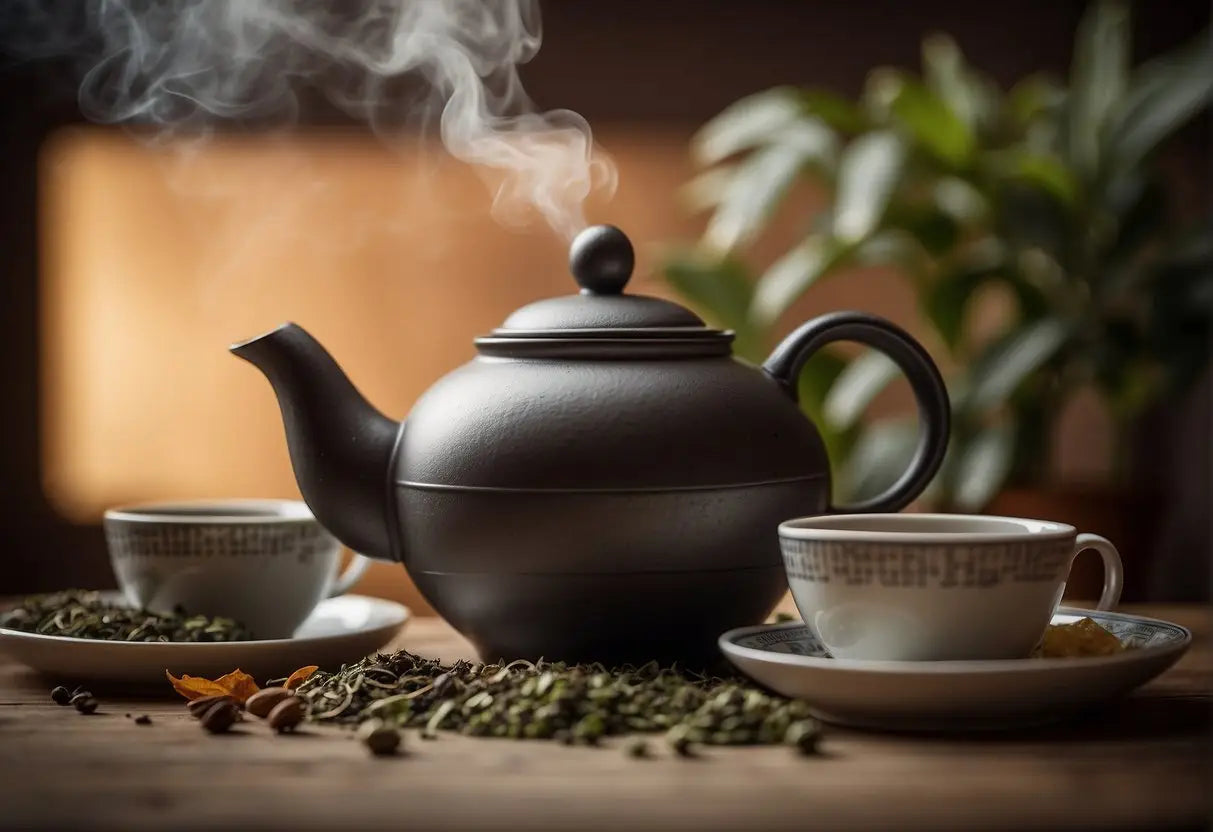How to Smoke Tea
In tea smoking, you infuse foods with the subtle aromas and flavors of various teas, using them as a smoking medium in a heat-safe pan or smoker.
Overview of Tea Smoking
Tea smoking is a culinary technique inspired by traditional Chinese cooking practices. It involves using tea leaves as a primary component in a mixture that's heated to create smoke, which permeates and flavors food.
Steps to Tea Smoke:
Bestsellers
- Preparation: Collect tea leaves, a heat source, and a container for smoking.
- Mixture: Create a blend of tea leaves, usually with rice and spices.
- Heat: Apply heat to the mixture until it starts smoking.
- Smoking: Place food above the smoking mixture, ensuring it is well-enclosed to trap the smoke.
- Flavoring: Allow the smoke to infuse the food with flavor over a controlled period.
The process is delicate and requires attention to the duration of smoking and the intensity of the heat to prevent bitterness.

Types of Tea for Smoking
The type of tea you choose for smoking can significantly affect the flavor imparted to the food. Each tea has a distinct profile, ranging from subtle to robust.
Common teas used for smoking and their flavor profiles:
| Tea Type | Flavor Profile | Food Pairing Suggestion |
|---|---|---|
| Lapsang Souchong | Smoky, woody | Ideal for red meats and robust dishes |
| Jasmine | Floral, sweet | Suitable for seafood and chicken |
| Green Tea | Grassy, fresh | Complements delicate foods like fish |
| Oolong | Fragrant, mellow | Works well with pork and duck |
When choosing a tea for smoking, consider the natural pairing of the tea's aroma with the food's flavors. Delicate teas like green tea are better suited for lighter foods, while stronger teas like Lapsang Souchong can stand up to the flavors of red meats.
Preparing to Smoke Tea
Before you begin, it’s essential to have the right equipment, select quality tea leaves, and understand safety considerations to ensure a satisfying experience.
Choosing the Right Equipment
To smoke tea effectively, you'll need a few key items:
- Pipe or Hookah: Choose a device specifically designed for smoking herbal substances.
- Screens: These will hold the tea leaves in place and prevent inhalation of particles.
- Lighter or Matches: Have a reliable ignition source to light the tea leaves.
Selecting Tea Leaves
When picking tea leaves:
- Dryness: Ensure the leaves are completely dry to facilitate even burning.
- Quality: Opt for high-quality, organic tea to avoid inhaling pesticides or other harmful chemicals.
- Grind: If the leaves are not already cut, grind them coarsely to allow for smooth airflow.
Safety Considerations
Keep these safety tips in mind:
- Ventilation: Smoke in a well-ventilated area to avoid excessive inhalation of smoke.
- Hydration: Drink water before and after smoking to keep your throat hydrated.
- Moderation: Start with a small amount to test your reaction to the tea leaves.
The Smoking Process

The smoking process is a method to infuse tea leaves with smoke flavor, typically using wood chips. Mastery of heat control and smoking techniques is essential for a quality outcome.
Preparing the Tea Leaves
- Selection: Choose loose leaf tea, as it absorbs smoke better than tea bags.
- Moistening: Lightly dampen the leaves to help them absorb smoke.
Lighting and Heat Control
- Setup: Use a stovetop smoker or a pan with a rack and lid.
- Temperature: Maintain a steady temperature of around 212°F (100°C), as tea leaves are delicate.
Smoking Techniques
- Wood Choice: Select hardwood chips, like oak or hickory, avoiding resinous woods like pine.
- Duration: Smoke the tea leaves for 3-5 minutes for a light flavor, or longer for intensity.
Flavor and Aroma Enhancement
To elevate the sensory experience of smoking tea, consider the types of herbs and spices you incorporate, as well as how the intensity of the smoke itself affects the ultimate flavor and aroma profile.
Lao Ban Zhang
Adding Herbs and Spices
Integrating herbs and spices can significantly enhance the aromatic complexity of your smoked tea. Choose complementary flavors that match the base tea profile. For example:
- Mint or lemongrass for a fresh, zesty kick
- Cinnamon or cardamom for warmth and sweetness
- Lavender or chamomile to add floral notes
Selecting the right herb or spice can alter the mood of the tea, making it soothing or energizing.
Balancing Smoke Intensity
The intensity of the smoke is crucial in defining the final taste. A balance must be struck to ensure it does not overpower the delicate notes of the tea and herbs.
- Light Smoke: A gentler smoking approach will impart a subtle flavor, suitable for white or green teas.
- Heavy Smoke: Stronger smoking methods suit bolder tea types such as black or oolong.
Use woods and materials that produce smoke which complements the tea, such as:
| Wood Type | Smoke Intensity | Best Paired With |
|---|---|---|
| Applewood | Light | Light-bodied teas |
| Hickory | Medium | Oolong teas |
| Mesquite | Heavy | Robust black teas |
Remember, less is often more; start with a small amount of smoke and increase as needed based on your flavor preferences.
Post-Smoking Procedures

Once you have finished smoking your tea leaves, it's important to properly cool and store them to preserve their flavor. Additionally, taking care of your smoking equipment ensures it remains in good condition for future use.
Cooling and Storing Smoked Tea
After the smoking process, spread out the tea leaves on a clean, cool surface away from direct sunlight. This allows them to cool evenly and prevents any additional cooking that might occur from residual heat. Cooling should not be rushed, as it is a crucial step in developing the final flavor.
Storage is critical to maintain the tea's quality. Place the cooled tea leaves in an airtight container to prevent further oxidation and contamination from foreign odors. To keep the smoked aroma intact, store the container in a cool, dark place. Humidity and light can degrade the tea, so it is best to keep conditions stable.
Cleaning and Maintenance
After each smoking session, cleaning your equipment is vital for maintaining its longevity and ensuring the purity of flavor in subsequent batches of tea. Begin by disposing of any ashes in the smoker. Clean all grates and surfaces with warm, soapy water, then rinse thoroughly to remove any soap residue.
Allow all components to dry completely before reassembling to prevent rust or mold growth. It's advisable to occasionally check for any wear and replace parts as needed. Proper maintenance keeps your smoker ready for your next tea smoking endeavor.
Frequently Asked Questions

In this section, you'll find straightforward answers to common inquiries about smoking tea, covering effects on the body, preparation, and legal considerations.
What are the potential effects of smoking tea on the body?
Smoking tea may lead to effects such as slight relaxation due to the natural compounds present in tea leaves. However, inhaling smoke of any kind can irritate the respiratory system.
Can smoking certain types of tea provide relaxation benefits?
Yes, some people report a calming effect after smoking teas like chamomile or lavender, which are known for their natural relaxing properties.
Are there legal restrictions on smoking tea, especially for minors?
While tea itself is legal, minors may be prohibited from purchasing products intended for smoking in many jurisdictions, regardless of the substance.
How can tea leaves be prepared for smoking?
To prepare tea leaves for smoking, dry them thoroughly and shred them finely before rolling them into a cigarette or placing them in a smoking apparatus.
What is the difference in sensation between smoking tea and smoking substances with nicotine?
Smoking tea typically lacks the addictive potential and stimulating effects of nicotine, offering a milder and less intense sensation.
What does smoking tea typically smell like?
The aroma of smoked tea can vary widely depending on the type of tea, with scents ranging from floral to earthy, mirroring the tea's natural fragrance when brewed.
← Older post Newer post →











